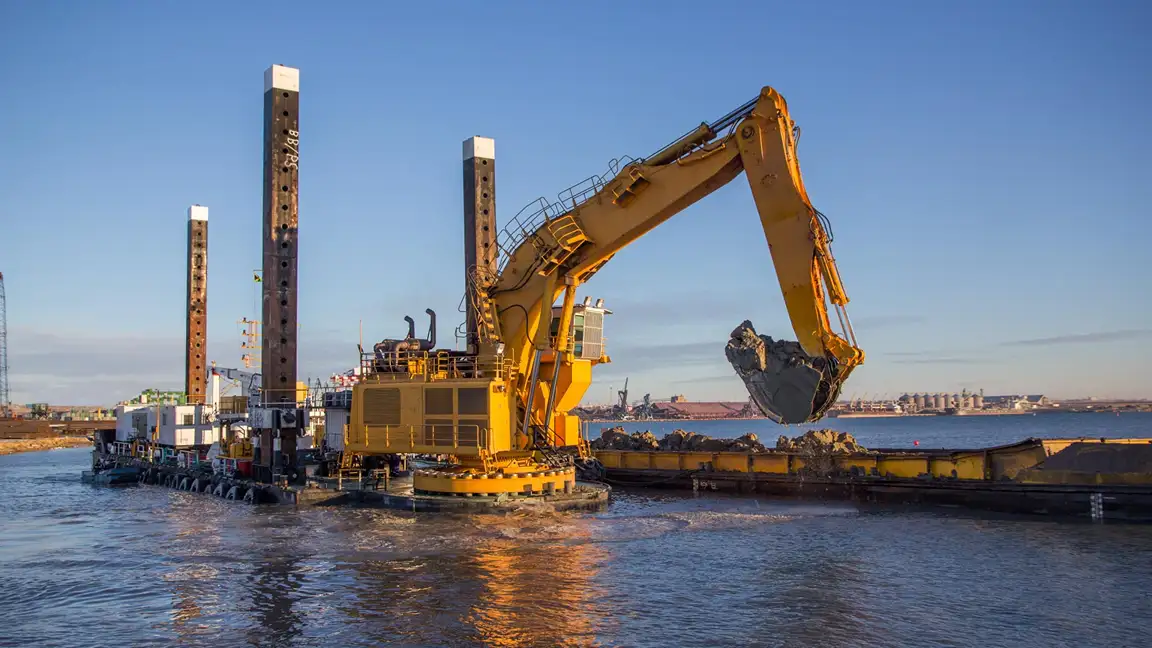Introduction
Ports play a vital role in trade, transportation, and tourism, but maintaining clear and navigable waterways is a constant challenge. Over time, sediment and silt accumulate in harbours and navigation channels, making it difficult for vessels to access ports efficiently. To address this, the twice-yearly maintenance dredging process ensures that ports like Cardiff Harbour remain operational and accessible. With the arrival of state-of-the-art vessels like the UKD Seadragon, modern dredging process methods are now more efficient and environmentally friendly than ever before.
Why Dredging is Necessary for Ports
Dredging is essential for port maintenance as it prevents excessive sediment buildup, which can restrict access for commercial and leisure vessels. If left unmanaged, silt accumulation can cause:
- Shallow navigation routes, making it difficult for ships to enter and exit ports safely.
- Increased risk of vessel grounding and accidents.
- Reduced operational efficiency for trade and transport.
Regular Cardiff Harbour dredging and similar dredging process efforts across the UK ensure that ports remain functional year-round, supporting maritime trade and local economies.
The Twice-Yearly Maintenance Dredging Process
In Cardiff’s Outer Harbour and Approach Channel, the dredging process occurs twice a year to remove around 70,000 tons of sediment. The dredged material is transported to designated disposal sites in the estuary, ensuring minimal disruption to the ecosystem. The dredging process follows strict environmental guidelines and is essential for maintaining navigation channels.
The Sospan Dau, a Dutch-built trailing suction hopper dredger, was recently seen passing through Penarth’s waters as part of its scheduled dredging campaign. Similarly, the UKD Seadragon, a water injection dredging vessel, has now arrived in Cardiff to enhance the dredging process further.
The Role of Modern Dredging Vessels
Advanced dredging technology has significantly improved efficiency and sustainability in port maintenance. The UKD Seadragon, recently introduced by UK Dredging, is a state-of-the-art Shoalbuster 2711 Water Injection Dredger featuring:
- Diesel-electric propulsion, reducing emissions and fuel consumption.
- An electric dredge pump, capable of delivering 4,000m³/hr of water, increasing efficiency.
- Enhanced power management systems, optimizing operations while minimizing environmental impact.
These modern dredgers are crucial for UK dredging efforts, ensuring smooth port operations with reduced carbon footprints.
Environmental Considerations in Dredging
Dredging operations must balance efficiency with environmental responsibility. Modern sediment removal techniques, like water injection dredging, minimize disturbances to marine life while ensuring effective harbour upkeep. Key environmental benefits of the dredging process include:
- Reduced fuel consumption and CO₂ emissions through advanced propulsion systems.
- Careful sediment disposal at regulated sites to avoid ecological disruption.
- Efficient harbour upkeep methods that extend the time between major dredging process campaigns.
Future of Dredging in the UK
With technological advancements, port maintenance is becoming more sustainable. Innovations in dredging technology, such as AI-assisted monitoring and eco-friendly vessel designs, are shaping the future of UK dredging. As ports continue to expand and accommodate larger vessels, efficient navigation channel maintenance will remain a top priority.
Conclusion
The twice-yearly maintenance dredging process is essential for keeping ports like Cardiff Harbour operational and accessible. With the introduction of modern dredging vessels like the UKD Seadragon, port maintenance is becoming more efficient and environmentally sustainable. As technology continues to advance, dredging will remain a critical aspect of maritime infrastructure, supporting trade, transport, and coastal management.
